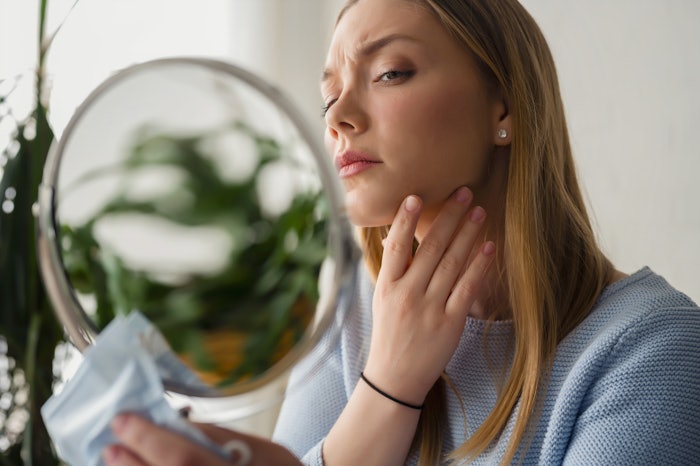
We’re used to wearing masks in our everyday lives now, but there’s one big downside: maskne. Our flawless complexions have been compromised. Whether we went for surgical masks or invested in chic fabric masks, it’s done our skin no favors and we’re spottier than ever.
Now that we need to wear face masks for shopping and public transport again, we could experience maskne again. But it doesn’t have to be that way – here are some top tips on preventing mask acne so your skin stays happy while you stay safe.
Go with a Silk Mask
The main skin issue with face masks is the materials they’re made out of, which can irritate our skin. Surgical masks are usually made out of polypropylene, a plastic polymer. That doesn’t exactly sound skin-healthy, does it?
Even your well-made cotton fabric mask can cause irritation because it’s tightly fitted to your face – that causes friction. For a mask to do its job, it needs to be thick or multi-layered. It can stifle our skin, and that leads to clogged pores.
Stay safe and sleek with a silk face mask instead. Silk has become recognized as a skin savior. TikTok is filled with dermatologists and influencers recommending you switch to a silk pillowcase for better skin and hair. Its silky-smooth texture rubs against our skin far less, making it a breathable and frictionless fabric. It also has moisture-wicking properties, which limit the heat and moisture build-up that can make us sweat and clog our pores.
Another Kind of Face Mask
Taking your face mask off and putting another one on could be the answer to solving your maskne woes. But this time, the mask we’re talking about is the wash-off kind. Face masks are a deep treatment for your skin and offer a ton of benefits, from soothing redness caused by masks, to drawing out the impurities that come with constant wear.
Clay masks are the winner for soaking up the oil, sweat and debris caused by constant mask-wearing. Certain types of clay, including bentonite clay and kaolin clay, absorb excess oil from your pores – and excess oil is ultimately what leads to spots forming.
You can also use a mask that combines oil-absorbing clay with soothing ingredients. This will add a boost of skin-plumping hydration and make sure your skin isn’t dried out. This is perfect if you’re struggling with maskne because it often starts with irritation caused by friction and heat.
Review your Skin Care Routine
You’ve got your luxurious silk face mask, and you’ve added a clay mask to your skin care routine. Now, to banish maskne once and for all, it’s time to add acne-fighting ingredients to your skin care. Facial cleansers with salicylic acid can supercharge your cleansing routine, adding an acne-busting ingredient to it. You could also incorporate a serum or a toner with the ingredient a few times a week. Salicylic acid is one of very few ingredients proven to get into your pores – and once inside, it gets to work clearing all that nastiness out.
Retinol is well-known as an anti-ageing powerhouse, but did you know it’s also amazing in the fight against acne? This ingredient achieves both in the same way by increasing your cell turnover. This means your skin produces more collagen, which is essential for plump, youthful skin. This also means it works as an exfoliant to get rid of dead skin cells, dirt, and oil, which can all cause acne. Plus, starting retinol in your early twenties means you get a head start on fighting signs of aging – win, win!
Finally, make sure that none of your products, whether that’s make-up, skin care, or even self-tan, have ingredients that could clog your pores or cause acne. If you’re already experiencing a form of acne, wearing face masks can make it worse – so it’s best to treat your acne as a whole. If you love your self-tan, switch to clear tanning water; the pigment in traditional tanners is a major source of acne. If you’re currently using a pigmented facial tanner and you want to give this a try, use a tan eraser to create a blank (and glowing!) canvas. When it comes to make-up, look for oil-free formulas and make sure you’re taking it all off properly by double cleansing.
On top of everything else that’s happened over the past two years, we don’t need maskne to stress us out again. You might have struggled with it the last time we needed to wear face masks, but now you know exactly how to treat and prevent it. Your skin will be just as smooth and glowing after you take your mask off as it is before you put it on.










